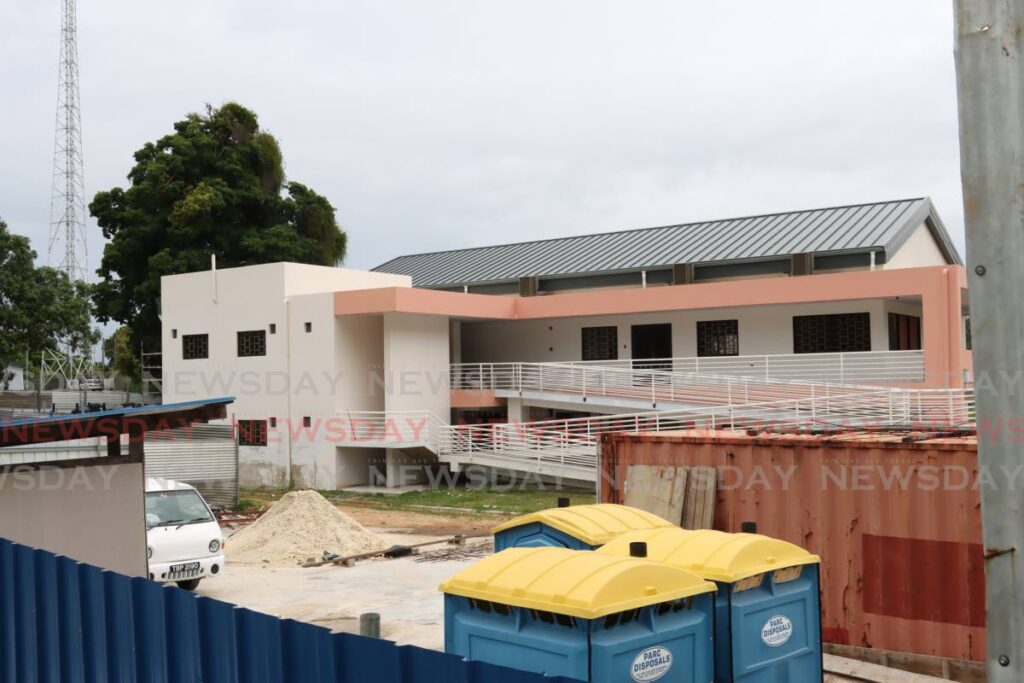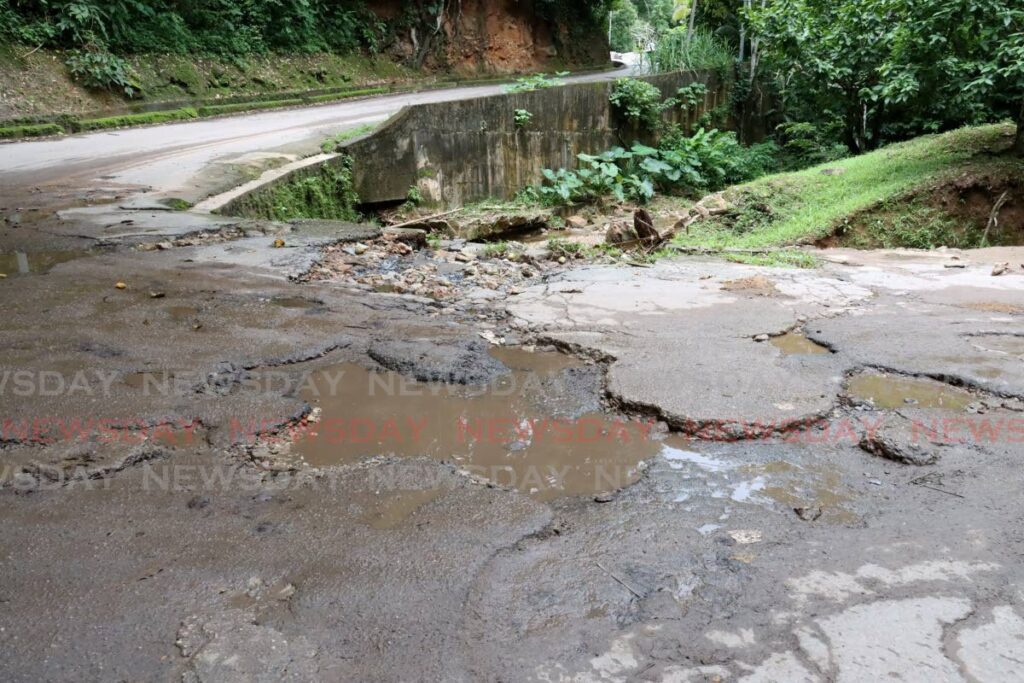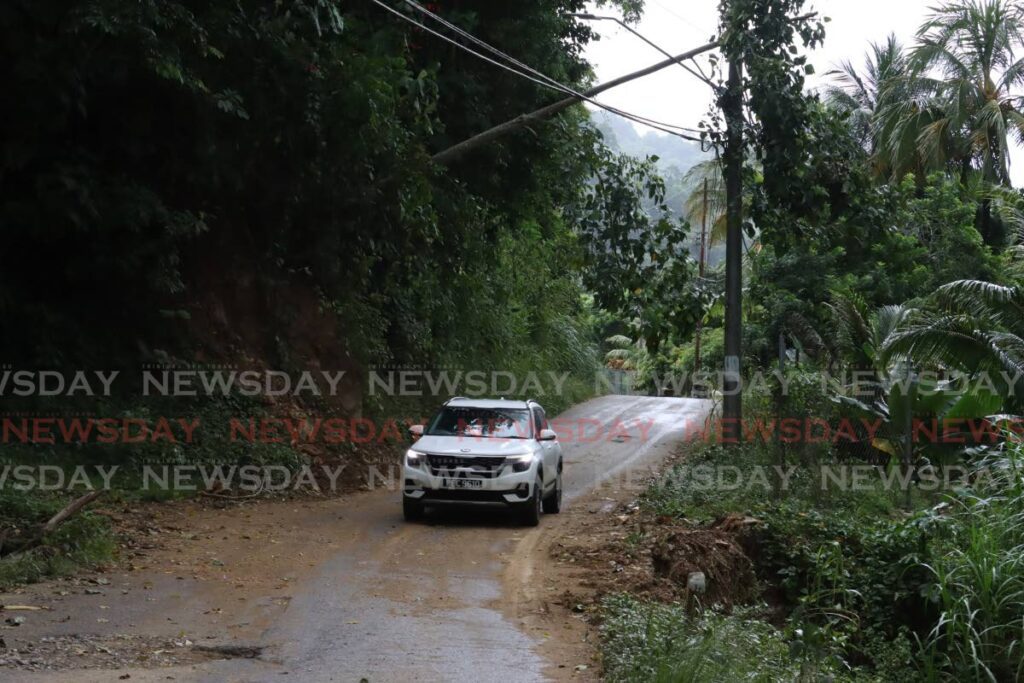Lopinot residents plead for better infrastructure

WHEN it rains, many people have to deal with flash flooding.
However, residents of Lopinot face the threat of being cut off from the rest of the country.
The 7.5 mile-long Lopinot Road starts at the Arouca Junction. It is winding and narrow.
On August 21, Newsday spoke to taxi driver Shashi Maharaj, 48, who has been plying the Lopinot Road for 30 years.
He said the condition of the road has extended a one-way trip from the Eastern Main Road to La Pastora from 20 to 40 minutes.
Maharaj said last week said he had to spend $3,000 to repair the suspension of his car. He replaced the cradle bushings and shock absorbers.
The route is only served by "PH" drivers, as the Public Transport Service Corporation discontinued its Lopinot service years ago.
"Taxi drivers," Maharaj said, "try their best to facilitate their passengers, like schoolchildren and people who work outside the community."
When the weather is bad and it is raining heavily, he said, taxis can be stuck at the Surrey ravine for up to five hours, as the road becomes impassable. Sometimes their only option is to shuttle the passengers from different vehicles and the passengers walk through the raging water.
One resident told Newsday when rain falls, water in the taps goes as well.
"At Surrey ravine, when water crosses over, it mashes up the pipes and we have to wait for WASA to come and clear it and fix it."

Newsday spoke to Surrey Village Council president Marsha Ramoutar and vice president Tobias Julien on August 21.
They said residents need a place to gather for community events. The village council has to meet at members' homes.
Ramoutar told Newsday, "I would like to see a play park in our community, development programmes for the youths like trade programmes, etc, programmes for the elderly to keep them interactive both socially and technologically. And sports for the youths."
Nicolene Taylor-Chinchamee, a lifelong Lopinot resident, is the newly-sworn-in NTA custodian for Lopinot/Bon Air West and the shadow councillor. Taylor-Chinchamee also volunteers with the Hunters Search and Rescue team.
On August 12, she shared a video of the flooded Surrey ravine with Newsday.
Newsday visited on August 15. The Surrey ravine at lightpole 123 was full of potholes and it looked as if the road could crumble away. At the sharp corners, railings were dilapidated or nonexistent.
Bamboo growing at the forest's edge has blocked waterways and in some spots obstructs traffic. T&TEC crews, residents told Newsday, had been called in earlier that week to clear the bamboo that had fallen on overhead electricity wires.
Taylor-Chinchamee also said if the area is cut off during a natural disaster, residents would not be able to get to a shelter. The closest are in Lopinot and Arouca.
"There should be no political discrimination when facing a natural disaster," she said.
Newsday saw a few residents still have no pipe-borne water. These households share a communal tank that is filled by WASA.
Julien said, "Young people in Surrey have no recreation ground."
Road access to the two main rivers that are frequently visited by locals and other people for recreation needs development, he added.
Newsday observed road repairs have been progressing, as it is now easier to drive to Surrey Village.

Julien suggested since the road to Surrey has been upgraded, a regular PTSC bus service should be restored. There are certain hours and certain days when it is difficult to get transport, Ramoutar said.
Local government councillor for La Florissante/Lopinot Dwayne Mora told Newsday in a phone interview on August 23, "There is a plan to raise the roadway and put bigger cylinders (drains) below it, since the present cylinders are unable to deal with the volume of water when it rains."
Mora said the pipelines don't burst, but the turgidity affects the water and the pumps are shut off.
In the meantime, he said, minor restoration and spot-patching will be done in the next two-three weeks.
The community centre, he said, should be completed before the end of the year,
The Lopinot historical complex upgrade, Mora said, will be done in three phases. The wooden bridge was completed in March. The bathrooms are the next phase and the third stage is the restoration of the count's house.
Mora admitted the Lopinot Road has been neglected for the last three or four decades.
Among recent improvement, Mora said, are installing streetlights from Dunder Hill to the Lopinot historical site and an improved water supply.
On August 21, Mora and MP for Lopinot /Bon Air West Marvin Gonzales visited the La Pastora community in Upper Lopinot to look at infrastructure development projects.
"The ongoing works include upgrading roads, agricultural access roads, drainage, and other essential infrastructure," Gonzales said in a Facebook post.
"When I campaigned in 2020, I pledged to work with the Government to acquire the necessary financial resources to improve the road infrastructure at Upper Lopinot, La Pastora Village. As their parliamentary representative, I am most satisfied that this dream is now becoming a reality. I'm pleased to report that I was impressed with the significant progress that has been made on these vital projects."
The history of Lopinot
Lopinot for many is synonymous with a visit to the Lopinot House.
According to the National Trust's website, Lopinot House sits in the Lopinot Historical Complex, Lopinot Village, Arouca. Lopinot Road is on the west, Lopinot River on the east, state lands (a field) on the north, and private houses on the south.
The property is named after the original estate owner, Charles Joseph, Compte de Loppinot, a Frenchman who arrived in Trinidad in 1800 and established La Reconnaissance Estate in 1804.
Lopinot House was built in 1806 and it is one of the few remaining structures from La Reconnaissance Estate.
The estate, it said, gave rise to Lopinot Village. Enslaved Africans and indentured Indians worked to cultivate cocoa at La Reconnaissance and the settled around the estate. The Lopinot Road was built to facilitate access to the estate. La Reconnaissance was important to the development and settlement of the geographic area; the name of the owner, Lopinot, became synonymous with the estate and the village, it said.
According to the National Trust, in the 19th century Venezuelan peons migrated to the Lopinot valley to work on the estate as well. Many archaeological finds around the site confirm these layers of history and the museum displays the culture and history of the village.
The Lopinot Historical Complex was transferred from the Ministry of Agriculture, Land and Fisheries to the Ministry of Tourism, Culture and the Arts in July 2022.
The village is also known for its cocoa and coffee.

Comments
"Lopinot residents plead for better infrastructure"